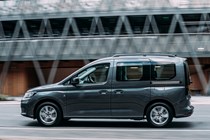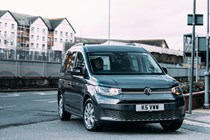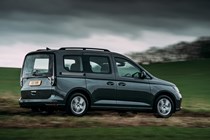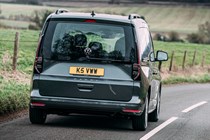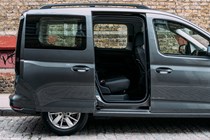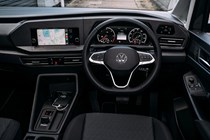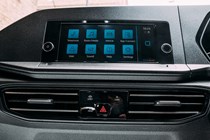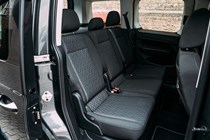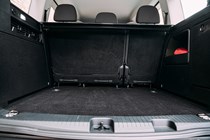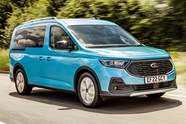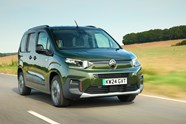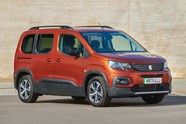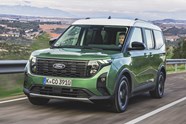
Volkswagen Caddy review
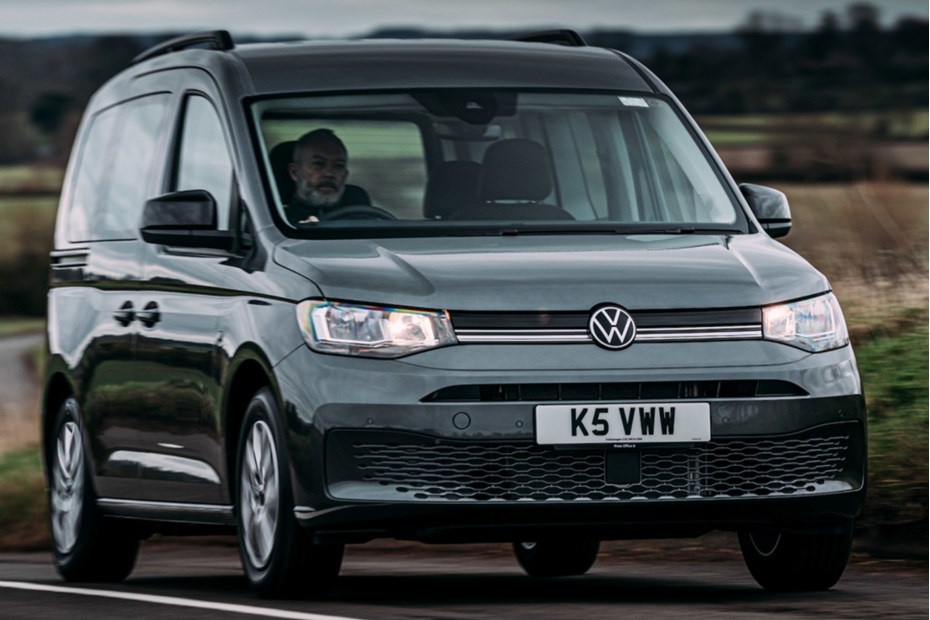
At a glance
| Price new | £28,345 - £37,797 |
|---|---|
| Used prices | £15,462 - £31,790 |
| Road tax cost | £190 |
| Insurance group | 8 - 13 |
Get an insurance quote with

|
|
| Fuel economy | 39.8 - 57.6 mpg |
| Range | 517 - 638 miles |
| Miles per pound | 5.8 - 7.4 |
| View full specs for a specific version | |
Available fuel types
Petrol
Diesel
Pros & cons
- Very practical yet car-like inside
- Choice of petrol or diesel engine
- Short- and long-wheelbase available
- Looks like a van
- Noisy inside compared with a car
- Problematic infotainment
Volkswagen Caddy MPV rivals
Overview
The VW Caddy is perhaps the most pragmatic of all the ‘vans with windows’ vehicles you can currently buy in the UK. Among the best people carriers if you value practicality over all other aspects, these kinds of machines offer passenger and luggage space to trump similarly-sized cars, and increasingly give you genuine style as well.
In the Caddy’s case, though you can buy a van version, the underlying platform for this version (known as the Caddy Mk5) is the same as that used by the Volkswagen Golf. Which immediately promises a degree of sophistication not usually associated with commercial vehicles – something we’re pleased to report it absolutely delivers.
Meanwhile, the Caddy’s major van-based competition, the Peugeot e-Rifter, Citroen e-Berlingo and Vauxhall Combo Life Electric, are now only available with electric power. Which means there’s pretty much only the Ford Tourneo Connect as a direct rival, and that’s actually based on the Caddy. Ford does offer a slightly smaller Tourneo Courier now as well, though.
The VW Caddy is not available as a 100% electric vehicle, so you’ll need to shop elsewhere if that is your priority. But it does come with petrol and diesel engines, equipped with DSG automatic or conventional manual gearbox, up to seven seats and in two body lengths – plus in August 2024 an eHybrid model with petrol-electric plug-in hybrid power was announced. So you’re not short of choice.
Here at Parkers we’ve driven many variants since this model was launched in 2021, including conducting a Caddy long-term test to see how it is to live with, and have extensive experience with the full-on van as well (see our Caddy Cargo van review). Don’t forget you can find out more about how we test cars if you want to understand more about how we’ve reached our conclusions.
The Volkswagen Caddy comes in two trim levels. The most basic version, simply called Caddy, is pretty spartan inside but still includes a touchscreen infotainment system and proper air-conditioning, as well as useful driver aids such as cruise control. Upgrading to the better-appointed Caddy Life spec adds alloy wheels, keyless go, parking sensors, rear-view camera, extra interior storage, LED rear lights, and allows you to sync-up your phone, among other extras.
Over the next few pages we’ll tell you everything you need to know about the VW Caddy, including what it’s like to drive, how efficient it is, and whether it’s really as practical as it looks. Keep reading for the full Parkers verdict.




